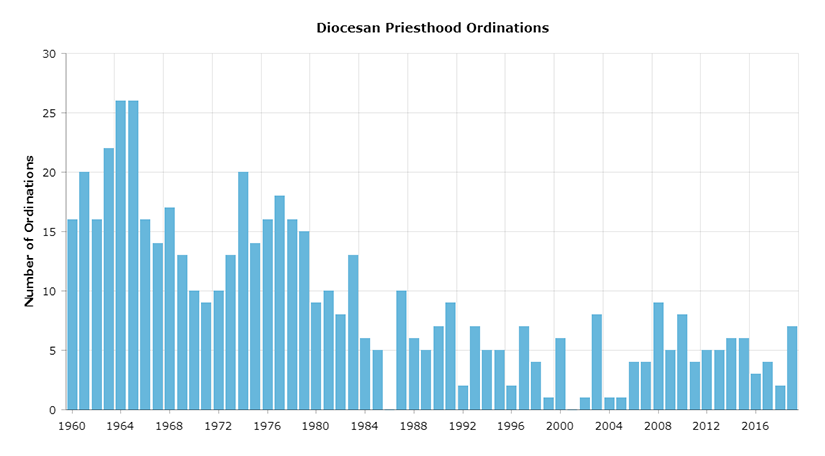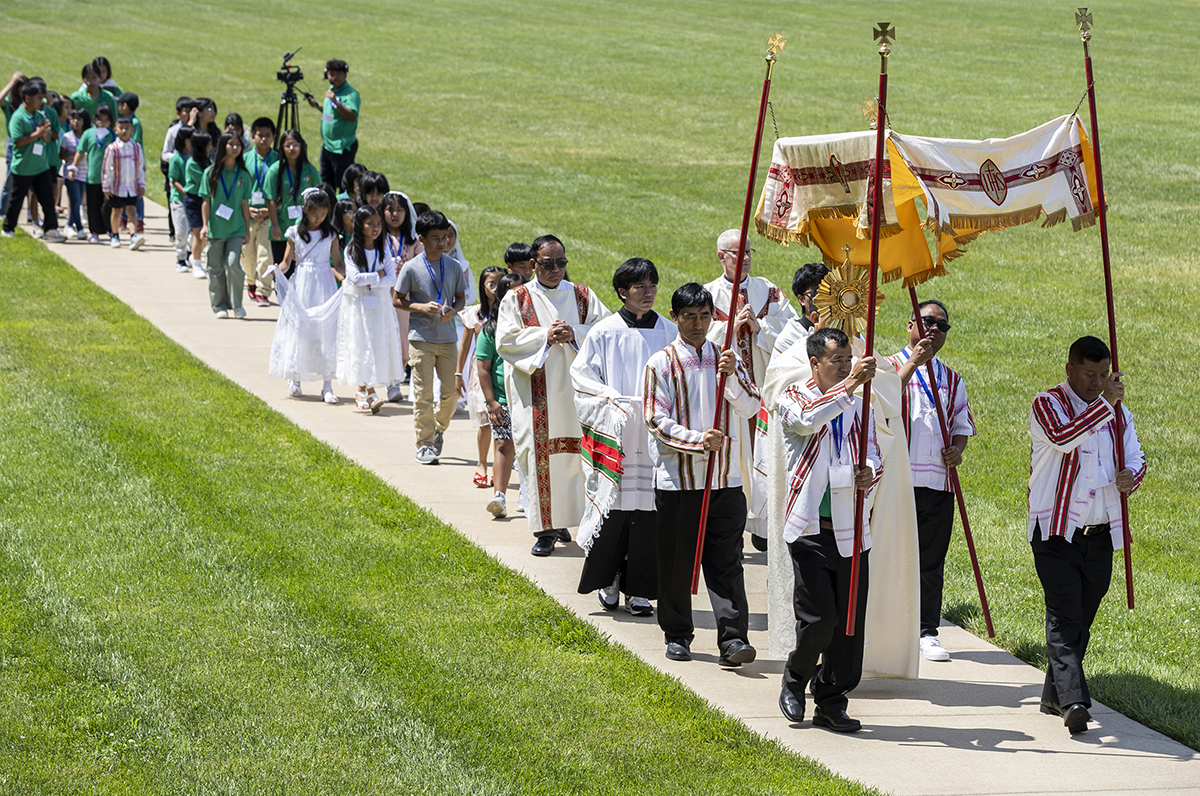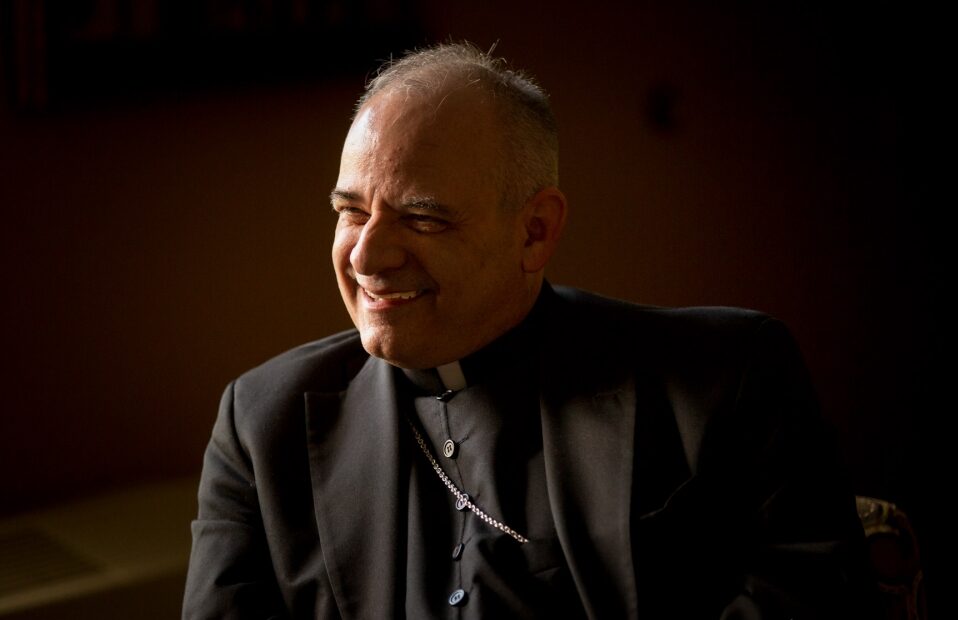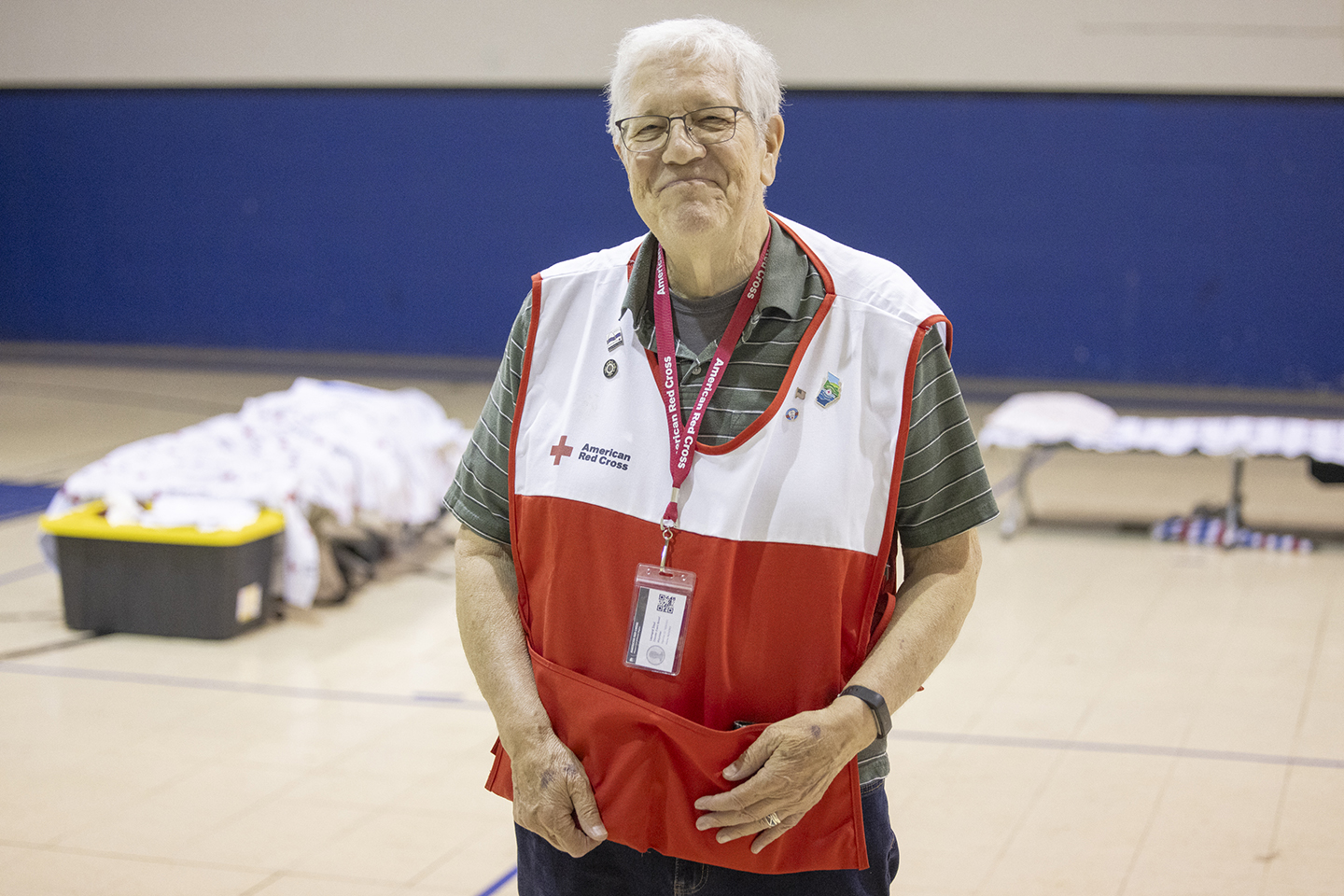Fewer number of priests brings challenges
Number of active priests and parishes expected to be equal by 2027
The pastor of St. Luke the Evangelist Parish in Richmond Heights, Father Peter Blake, also is the sacramental minister of Immaculate Conception Parish in Maplewood, where Deacon John Flanigan is the parish life coordinator.

The Missionaries of Our Lady of La Salette had pastoral responsibility for Immaculate Conception from 1975 to 2006, when they turned it over to the archdiocese due to fewer priests in their community. Archdiocesan priests served as pastors of the parish until 2016.
Immaculate Conception is among 23 parishes in the archdiocese being served by a parish life coordinator or without a resident pastor. It’s a reality because of a declining number of diocesan priests. A projection in 1997, when the concept of a parish life coordinator was unknown in the archdiocese, stated that parishes without a resident priest would be a reality within 20 years, by 2017.
Different methods of parish administration — such as sharing a pastor, being administered by a parish life coordinator or perhaps a cluster of parishes served by priests at one site — are expected to become more common in St. Louis in the near future. The changing demographics and priest distribution among the parishes of the archdiocese are resulting in a call for deeper collaboration between the laity and priests and a shift of perspective beyond the boundaries of the parish to region and archdiocese in a partnership for the future.
Today, two parishes in St. Charles County, staffed by six priests, serve nearly the same number of Catholics as 26 parishes in south St. Louis City, served by 31 priests. Currently, the archdiocese has 315 priests but only 196 are in parish assignments, with the rest retired or not serving in parishes of the archdiocese. The number of active priests has dipped from 481 in 1978 to 391 in 1997 to 275 in

2014.
By 2027, assuming the current ordination trends continue, expectations are that the number of active priests serving in parishes of the archdiocese will equal the number of parishes staffed by archdiocesan priests, 168. Projections are that by 2030 an average of 155 diocesan priests will be available each year to staff what is now 168 parishes in the archdiocese. This assumes that religious order priests will continue to serve 16 of the archdiocese’s parishes.
The Priests’ Council of the archdiocese, with the consent of Archbishop Robert J. Carlson, began looking at the staffing of parishes last fall with a goal of allowing the Catholic population to flourish in the years to come. A video explaining the facts is being sent to parish leadership. The purpose of the video is to ensure that the Catholic faithful have a full understanding of what the Archdiocese of St. Louis faces in the future.
Father Bill Kempf, chairman of the Priests’ Council, said the council wants to begin a deeper collaboration among laity and priests as they address the challenges facing the Church around staffing and leadership on the parish and diocesan level; invite parishes to increase efforts to foster vocations to the archdiocesan priesthood; and invite a shift in thought to collaboration and from “my parish” to “our archdiocese.”
The video points to a challenge Father Chris Martin, former vocation director, gave to parishes. He calculated that there would be increased number of priests sufficient to staff parishes if every parish produces one vocation to the archdiocesan priesthood every 10 years.

Father Kempf was the vocation director of the archdiocese from 1994-97, and he’d been concerned about the projections of active priests since then. It’s an attempt to be proactive, preparing for the future in staffing parishes. The point, he said, is to look at “how can we equitably use our brother priests without burning them out and make our parishes more alive so that they are vibrant centers.”
The video notes that from 1946 to 1967, Cardinal Joseph Ritter believed the ideal parish size was about 750 to 800 families. Bigger parishes were split into new parishes, and parishes were staffed with two to four priests. In his own parish, St. Justin Martyr, 20 parishes are within a 5-mile radius, Father Kempf noted.
>> Priests’ Council looks to the future
Goals:
• To invite priests and lay people into a deeper holiness and vibrancy in their faith expression.
• To begin a deeper collaboration among laity and priests in addressing the challenges facing the Church around staffing and leadership on the parish and diocesan level.
• To invite parishes to double down on their efforts to foster vocations to the archdiocesan priesthood.
• To invite a shift in consciousness from “my parish” to “our archdiocese.”
What people can do:
• Foster vocations to the diocesan priesthood.
• Find ways to help your parish priest and staff in making your parish and the Church vibrant places of faith and community.
• Have a plan in parishes with a single priest to follow on the day when the priest wakes up sick and is not able to celebrate Mass.
View the Priests’ Council video at: bit.ly/3d7RKIZ
The pastor of St. Luke the Evangelist Parish in Richmond Heights, Father Peter Blake, also is the sacramental minister of Immaculate Conception Parish in Maplewood, where Deacon John Flanigan is … Fewer number of priests brings challenges
Subscribe to Read All St. Louis Review Stories
All readers receive 5 stories to read free per month. After that, readers will need to be logged in.
If you are currently receive the St. Louis Review at your home or office, please send your name and address (and subscriber id if you know it) to subscriptions@stlouisreview.com to get your login information.
If you are not currently a subscriber to the St. Louis Review, please contact subscriptions@stlouisreview.com for information on how to subscribe.







